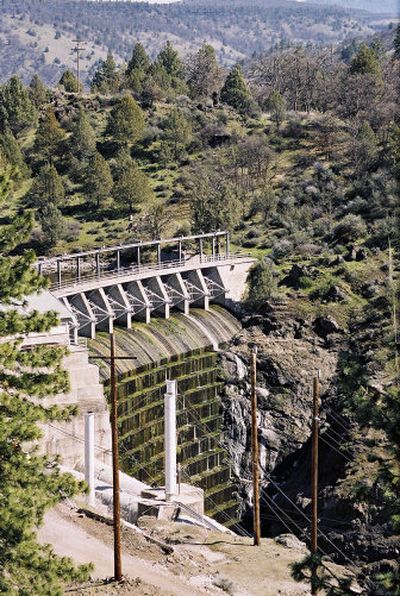Removing Klamath dams urged

GRANTS PASS, Ore. – The Federal Energy Regulatory Commission should analyze removing all four hydroelectric dams on the Klamath River to help struggling salmon, says the federal agency in charge of restoring their runs.
In comments on the commission’s initial look at relicensing the aging dams, NOAA Fisheries said FERC’s approach in a draft environmental impact statement violated federal law requiring analysis of a full range of alternatives.
PacifiCorp, which serves 1.6 million customers in six western states, is seeking a new operating license for the Iron Gate, J.C. Boyle, Copco No. 1 and Copco No. 2 dams, which produce about 150 megawatts of power, enough to serve 70,000 customers.
Friday was the deadline for responses to FERC’s initial look at what changes would be required to relicense the dams. A parallel negotiation process to reach a deal on relicensing the dams is under way involving PacifiCorp, salmon fishermen, Indian tribes, conservation groups and farmers.
A report for the California Energy Commission said PacifiCorp could save $101 million over the next 30 years by removing the dams and buying replacement power, rather than upgrading the dams and reducing power production to meet modern standards for fish protection.
The report by consultants M. Cubed of Sacramento, Calif., used cost estimates from state and federal agencies.
It found that upgrades to protect salmon, such as fish ladders and screens, will cost $190 million to $470 million. Increasing river flows for fish will reduce power production by 23 percent, and limit the dams’ flexibility to provide power during peak demand, it said.
The report cites figures that replacing the power over the next 30 years will range from $74 million to $167 million, and removing the dams will cost $90 million.
In hopes of making a breakthrough on a negotiated agreement on relicensing the dams, PacifiCorp revised its long-standing proposal to truck adult and juvenile fish around all four dams.
The new plan calls for installing fish screens on all four dams so that juvenile salmon and steelhead migrating downstream to the ocean are not sucked into turbines, and building a new fish ladder at J.C. Boyle Dam, the farthest upstream and the top electricity producer.
Adult salmon returning to spawn would be trucked around the three downstream dams, and some would be trucked around J.C. Boyle in order to reach the 300 miles of river habitat that the dams have blocked access to for nearly a century.
“The company’s proposal today underscores both its willingness to compromise and its desire to reach a common understanding with the federal agencies on these important issues to ensure successful reintroduction of fish in the project area,” Bill Fehrman, president of PacifiCorp Energy, said in a statement.
Craig Tucker, Klamath project coordinator for the Karuk Tribe, dismissed PacifiCorp’s new proposal as a public relations move, saying it falls far short of what federal agencies will eventually require to help salmon and will cost ratepayers more than removing the dams.
FERC must balance the value of the power generated by the dams against the cost to fish. NOAA Fisheries had advised the fish are more valuable than the power.
The river’s flagging salmon runs triggered a near shutdown of commercial salmon fishing on the West Coast this summer that cost commercial fishermen $16 million and forced severe cutbacks of irrigation water to Klamath Basin farmers in 2001.
The governors of Oregon and California have called for a summit meeting in January to plot how to repair the Klamath’s ecosystem, damaged by gold mining, logging, agriculture and hydroelectric power production. The top issue before the summit is dam removal.
FERC’s draft environmental impact statement looked at removing the two tallest dams, building fish ladders, and trucking fish around the dams.